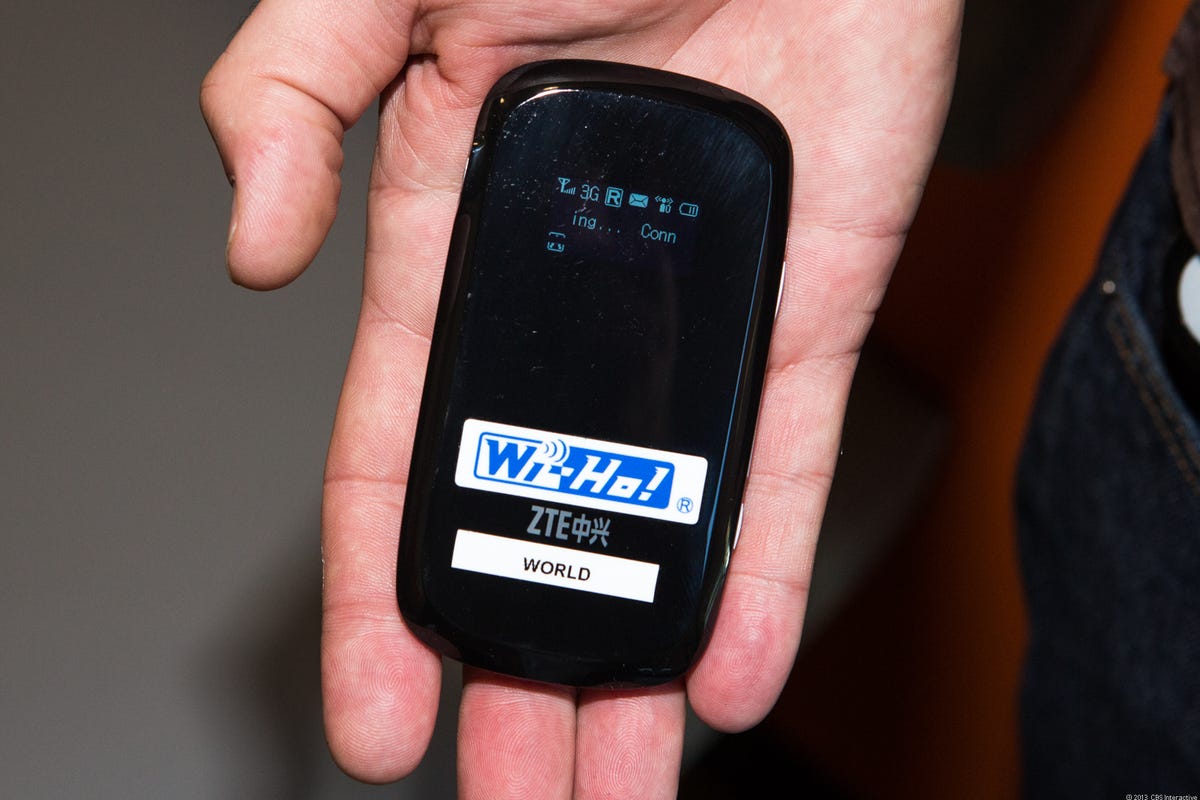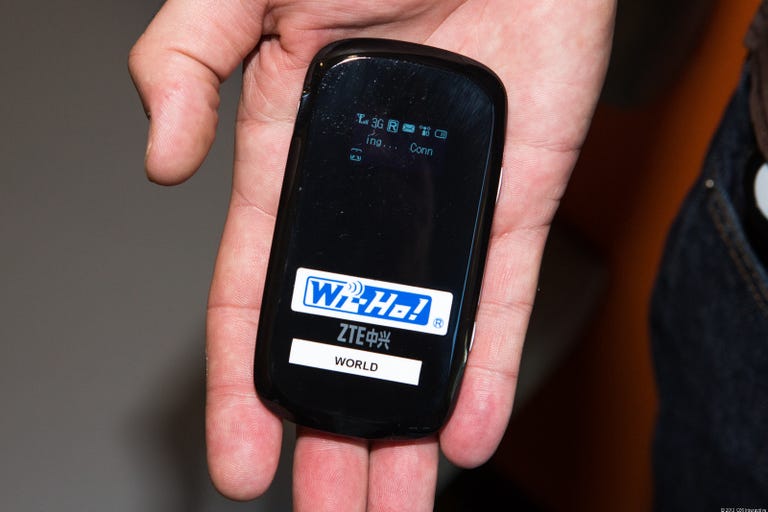 Why You Can Trust CNET
Why You Can Trust CNET Telecom Square Global Hotspot review: Easy Internet abroad, but best for heavy data users
Telecom Square's Global Hotspot service won't come cheap, but it's worth the cost when you really need to get online.
Telecom Square's international hot-spot service delivers a simple and effective way to access the Internet when you're traveling internationally. And though it doesn't come for pennies, it's comparable with rival services and, depending on your use, cheaper than using a roaming plan from a US carrier.
The Good
The Bad
The Bottom Line
I used Telecom Square on a recent trip to Germany and Greece. Like any cellular-run hot spot, I had to depend on a local carrier's network to get online. Of course, that meant that performance varied widely depending on my exact location -- I'll explain in detail below -- but on the whole I was pleased with the experience. And as long as you consider your options and planned data use carefully, I suspect that you will be too.

The service and cost
After you sign up for a hot-spot rental, Telecom Square overnights you the device just before your departure date. Then, after you use it on your trip and return home, you send it back to the company in an prepaid envelope. It's a simple process, though the shipping can cost you up to $29.95 without any special promotions (which the company occasionally runs). Alternatively, you can save yourself that fee by picking up a device in New York City or Los Angeles, but it would be better if the company also offered slower and less-expensive shipping options.
As I mentioned, Telecom Square's service is more business class than economy. Yet, if you're going to be a heavy data user while traveling, it can be cheaper than roaming through your carrier. Just understand that the base charge is a daily rental fee that depends on where you go. To begin, for $14.95 you can rent a hot spot that covers one country for unlimited data use. You can see the full list of covered nations here, but it includes the United States, Canada, Mexico, Australia, South Africa, and 31 other common travel destinations in Asia, South America, and Europe. Though the list hits top business destinations like China, Japan, the United Kingdom, and Germany, it's particularly sparse in Africa and Latin America.
Granted, $15 a day may seem exorbitant, but it's actually pretty reasonable if you're traveling for business or if you're planning to constantly upload photos or use streaming-media services. Rival service XCom Global, which
That's why if you're going to one place for a few days and don't want to think about how much data you're using, even $14.95 a day can save you money. Of course, the catch is that because wireless carriers don't cross national borders, your hot spot will work only in that one country. While that may not be a problem for a road trip across Australia, European vacations typically involve more than one stop. And it's for those transborder travelers that the economics of Telecom Square's service become less clear.
The company also rents a hot spot for $9.99 per day that works across 40 European countries, for example, but you're limited to 1GB of data per month. Alternatively, XCom Global gives you unlimited data in up to 40 countries in Europe for $14.95 per day. Conversely, though, Telecom Square can be cheaper as you go global. For $24.95 per day, you get unlimited data in 80 countries around the globe. That's not bad considering that XCom Global charges $395 per month for unlimited service in only four countries (out of a possible 175). So like I said, it all depends on how and where you travel.
The device
The actual hot-spot device I used is the ZTE MF60. Shaped like a smooth skipping stone, the device measures 3.93 inches long by 2.11 inches wide by 0.55 inch and weighs 2.65 ounces. On the front there's a small monochrome screen that shows the carrier names, signal strength, connection status, and battery life. A black plastic skin encloses the hot spot save for a thin silver ring around the middle. There you'll find the power control, a Micro-USB charger port, and a microSD card slot. The back cover removes easily to expose the 1,500mAh battery.
The hot spot comes in a fabric carrying case along with a standard wall charger and a plug adapter for the region to which you're traveling. You also can order extra batteries or a larger extended battery for an extra fee. Though Telecom Square sent me an extended battery to test, I never used it, mostly because I didn't want to carry the extra bulk around. Insurance is available for $2.95 per day, which will reduce your cost of a replacement device if your hot spot is lost or stolen.
My experience
I used Telecom Square on a two-week trip to Germany and Greece. In Germany, I used it around Lake Constance in Baden Wurttemberg (I just had to go to the Zeppelin Museum), in Southern Bavaria, and in Munich. In Greece, I used it exclusively on Crete near the city of Hania. The devices I used included an
On the whole, my experience was much better in Germany. There I always had a connection and my speeds were consistently fast, at least for what I was doing. As the MF60 tops out at 3G speeds (LTE hot spots aren't yet available), its promised speeds are 21Mbps download and 5.76Mbps upload. Though I didn't verify those promises with any tests, I was able to upload photos to Facebook, use Twitter, watch YouTube videos, send and receive e-mails, and browse the Internet without any hiccups. That was true even in a rural mountainous area near Neuschwantsein Castle. Streaming music was choppier at times, but I really had no major complaints.
My experience in Greece wasn't quite as rosy, but that wasn't the fault of the device. Remember that because the hot spot relies on a cellular connection, the Wi-Fi experience will depend on the carrier's signal. Unfortunately in my case, coverage where I was staying never got above four bars. And even then, the 3G connection was rather slow. It was passable if I was using it alone, but it slowed considerably when another person jumped on. Indeed, there were times when I couldn't tweet a photo or load a standard Web page when other people were using the hot spot with me.
The rated battery life is 2 to 3 hours. I had no problem reaching that mark, and it was more than enough juice for my use. Yet, it would have been a problem if I was out working all day and away from an outlet. Depending on your plans, you should consider another battery. The promised Wi-Fi range is 25 to 100 feet.
Though I never had to use Telecom Square's customer service while on the road, it's a big point in the device's favor: its tech support is open 24 hours a day. On the other hand, XCom Global's reps are only available from 7 a.m. to 5 p.m. PT. Indeed, those limited hours were the biggest problem when a group of CNET editors used XCom's hot spots at the 2013 Mobile World Congress. Given the 9-hour tome difference between Barcelona, Spain, and the West Coast, they had to seek help very late in their workday when the devices weren't functioning properly.
Conclusion
As noble as the idea as going off the grid may be, sometimes it's just not an attainable goal. And for those times, and for really heavy Internet users, Telecom Square delivers a reliable and user-friendly service for getting online. Sure, your exact experience will depend on how good cellular coverage is in your area, but that would be true with any wireless hot spot. And in most urban areas and tourist traps, I imagine that you'll be fine. What's more, while the service is expensive from the outset, if you weigh your options carefully, it may save you money in the long run.
Of course, public Wi-Fi through your hotel or a cafe is an option, but it won't always be feasible or practical. Not only can the quality of public Wi-Fi vary widely, but it's not secure. Terrible people trying to hack your device do exist, and you'll most likely find them in places where you don't need a password or an account to get online. The MF60, on the other hand, is secured through WEP and WPA standard, with each device having a unique password. Just note that each hot spot has a sticker with the password on it, so be careful where you have or to whom you show it.



